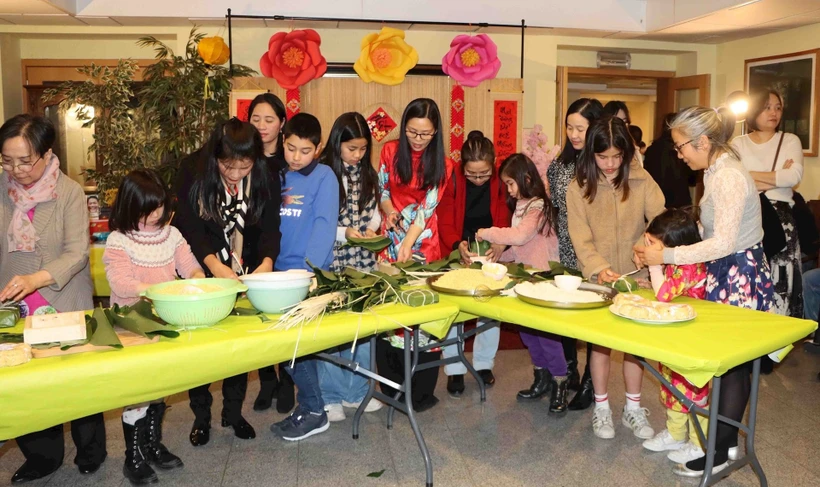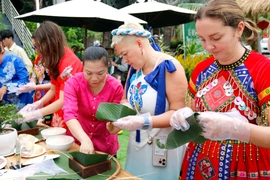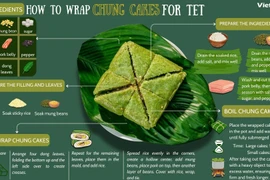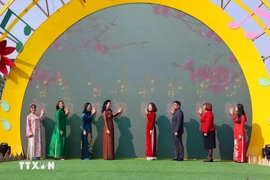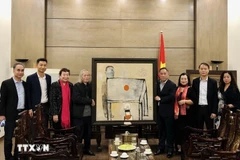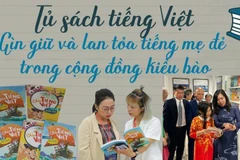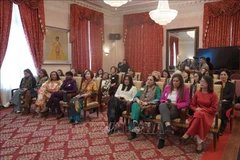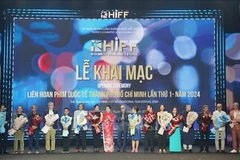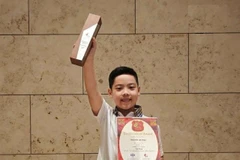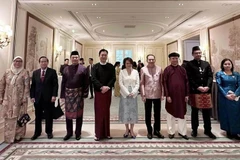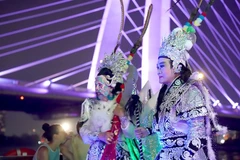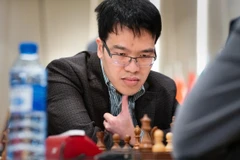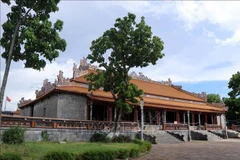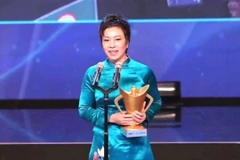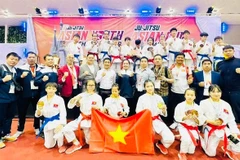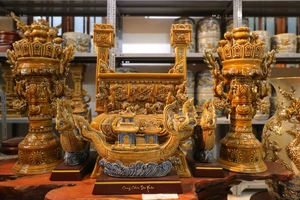Hanoi (VNA) - Seeing her children working excitedly with their father preparing dong leaves, scooping rice and beans, and picking meat to wrap the chung cake (square glutinous rice cake) as the new spring approaches, Nguyen Ngoc Anh couldn't help but feel moved.
"Although we live in Canada, every year my family still makes chung cakes just like any Vietnamese family. It’s how we ease our homesickness and connect my children to their roots," Anh shared.
Perhaps for any Vietnamese person, no matter where they are, the image of a pot of chung cakes with the fragrant scent of dong leaves placed on a stove to chase away the cold of winter has become a familiar sight every Tet season.
That pot of chung cakes is not only the taste of childhood, the warmth of family gatherings, and the flavour of home, but also a traditional cultural beauty that has been preserved by generations and is a proud symbol of the Vietnamese people.
According to the legend of "Chung Cake, Day Cake (round sticky rice cake)," the tradition of making chung cakes originated during the reign of the sixth Hung King. After defeating the An invaders, the king wanted to find a successor, so he called his sons to gather and declared that whoever could present the most delicious and meaningful food as an offering to their ancestors would inherit the throne.
Most of the princes went into the forests and the seas to find rare and precious products. However, Prince Lang Lieu, the poorest of them all, did not have the means to procure rare offerings. He was advised by a god to use simple local ingredients, such as sticky rice, green beans, pork, and dong leaves, to create two types of cakes: the chung cake and the day cake - symbolising Heaven and Earth - as offerings to his father.
Prince Lang Lieu’s chung cake symbolised the Earth, representing abundance and prosperity, with its filling of fragrant sticky rice, green beans, and pork, wrapped in green dong leaves and tied with soft rattan strings.
The square-shaped, delicious chung cake, presented to King Hung on the first day of spring, was meaningful and satisfying, leaving the king both pleased and moved. The king decided to pass the throne to Prince Lang Lieu.
Today, despite Vietnam’s deeper global integration and the increasingly fast-paced market economy, the chung cake remains an essential offering on the ancestral altar of every family during the Tet holiday.

In the city, where apartments are often quite cramped, Nguyen Thi Thuong, from Thanh Ha urban area, Hanoi’s Ha Dong district and her neighbours still make an effort to maintain the tradition of making chung cakes during Tet.
“At the end of the year, everyone is busy, so we divide up the tasks - some people handle the fuel and find a suitable place to cook the cakes, others look for dong leaves, buy rice, and order the meat. Then we all gather in the hallway to wrap the cakes, chatting happily, reminiscing about the old days when we stayed up late to watch the cakes cook, sitting around the fire with siblings, the scent of chung cakes blending with the aroma of roasted sweet potatoes and corn. It was warm, simple, yet peaceful and full of happiness,” Thuong shared.
According to her, continuing the tradition of making chung cakes is also a way for her and her neighbours to connect more deeply with each other. For her children -who may not have grown up in the countryside - they can still understand, feel, and preserve the beauty of the traditional cultural practices of Tet.
Not only families, but in recent years, many schools have also organised chung cake-making sessions for students on school grounds as a special lesson during the year. There, the students learn about the legend of “Chung Cake, Day Cake” and the special meaning of these traditional cakes. They are taught how to wrap the cakes themselves, gather around a stove in the schoolyard, and eagerly wait to enjoy the cakes they have made with their own hand./.
